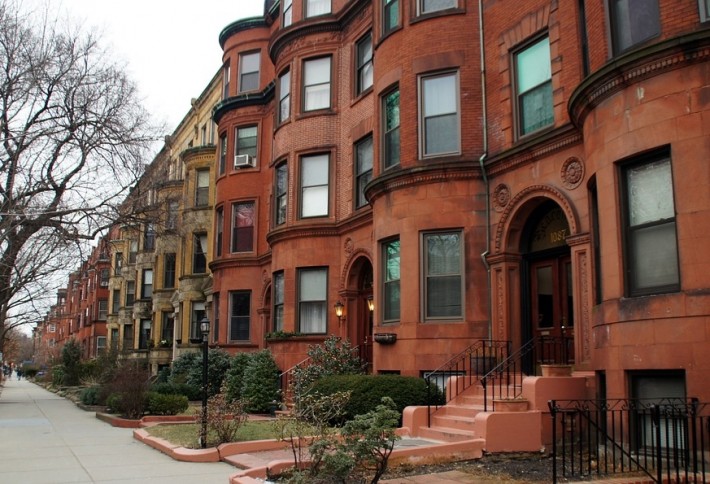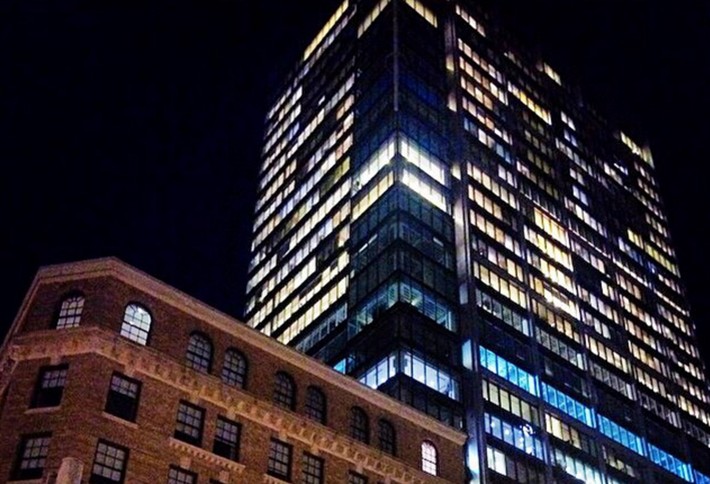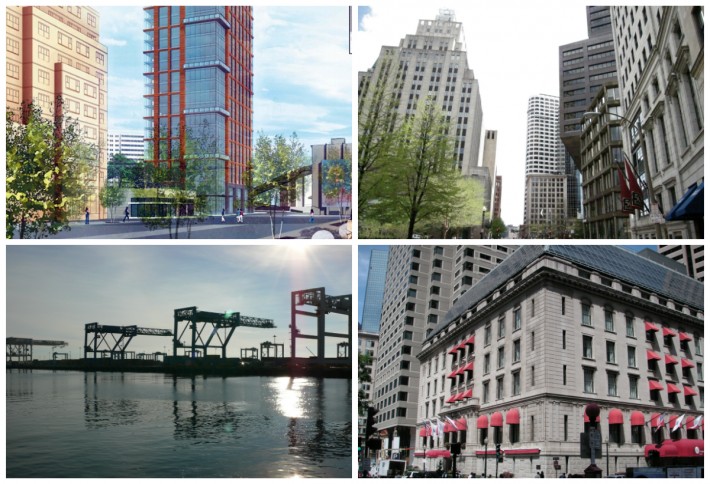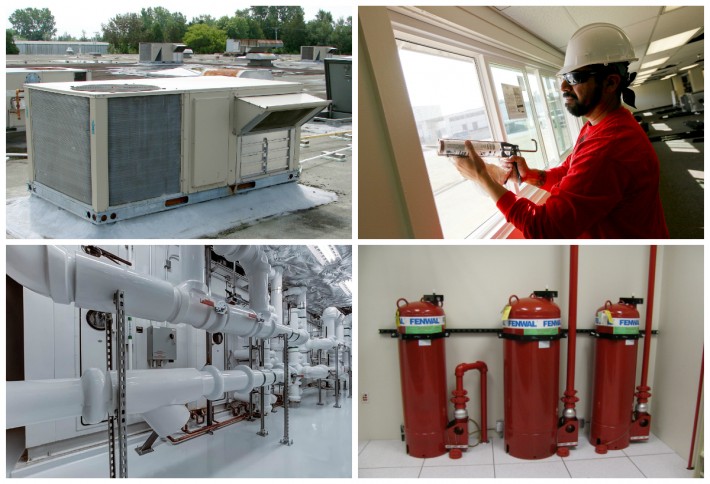In the last few years, Boston has made it its mission to make its properties more sustainable. In fact, J.C. Cannistraro service sales engineer Roland Oreste says, the city plans to reduce greenhouse emissions 25% by 2020, and is doing everything it can—from changing municipal rules to lauding greener properties—to encourage building owners and tenants to reduce energy costs. But Roland—as a member of J.C. Cannistraro's service group, which inspects properties in search of system inefficiencies and energy savings opportunities—finds that many aren't aware of what they can do to make their properties greener. So to give you a crash course on everything green in Beantown, we created this quiz.
To learn more about our Bisnow partner, click here.
1
For Boston's countless existing properties, what is now required to ensure their energy efficiency efforts?

An Current EnergyStar Rating
YOU'RE CORRECT!
While Boston isn’t demanding 70+ year old buildings to be up to the LEED standards of their modern counterparts (although a recent report found that some buildings from the 1940s have some of the lowest energy use per floor area), they do demand that every property, even historic ones, receives an EnergyStar rating. This zero to 100 scale shows how a building’s energy consumption compares to other similar buildings across the country, with the national average hanging around 50. To make sure that these historic buildings are energy efficient without drastic or irreversible changes, Roland suggests checking your old properties for potential sources of energy loss, such as drafty windows and poorly insulated rooms, that can be quickly and minutely caulked and repaired while respecting the wishes of the Landmarks society.
YOU'RE WRONG!
While Boston isn’t demanding 70+ year old buildings to be up to the LEED standards of their modern counterparts (although a recent report found that some buildings from the 1940s have some of the lowest energy use per floor area), they do demand that every property, even historic ones, receives an EnergyStar rating. This zero to 100 scale shows how a building’s energy consumption compares to other similar buildings across the country, with the national average hanging around 50. To make sure that these historic buildings are energy efficient without drastic or irreversible changes, Roland suggests checking your old properties for potential sources of energy loss, such as drafty windows and poorly insulated rooms, that can be quickly and minutely caulked and repaired while respecting the wishes of the Landmarks society.
2
True or False: One of the top priorities for any developer bringing a new property to the Boston market is earning a LEED Certification.

YOU'RE CORRECT!
Roland says that LEED certification ranks high on the list of any corporation considering new construction, since energy efficient buildings illustrates a company’s “commitment to good environmental practices” and is looked upon kindly by both potential tenants and the city at large. When the Atlantic Wharf (pictured) became the one of the earliest LEED Platinum Certified building in the Boston market with its innovative rainwater storage and reuse systems, green roofs, daylighting design and energy conserving mechanical, electrical and plumbing systems, for example, then-Mayor Thomas Menino held a ceremony for the plaque presentation, calling the designation a “great milestone…for the City of Boston and our innovative work in green building and development.” And that commitment to building a green environment continues to this day with every new property. After an amendment to article 37 of the municipal zoning code, Boston’s the first city in the nation to require a green building standard through municipal zoning requirements, forcing all large-scale projects meet the US Green Building Council's LEED certification standards, or they won’t be able to receive a permit from the Commissioner of Inspectional Services.
YOU'RE WRONG!
Roland says that LEED certification ranks high on the list of any corporation considering new construction, since energy efficient buildings illustrates a company’s “commitment to good environmental practices” and is looked upon kindly by both potential tenants and the city at large. When the Atlantic Wharf (pictured) became the one of the earliest LEED Platinum Certified building in the Boston market with its innovative rainwater storage and reuse systems, green roofs, daylighting design and energy conserving mechanical, electrical and plumbing systems, for example, then-Mayor Thomas Menino held a ceremony for the plaque presentation, calling the designation a “great milestone…for the City of Boston and our innovative work in green building and development.” And that commitment to building a green environment continues to this day with every new property. After an amendment to article 37 of the municipal zoning code, Boston’s the first city in the nation to require a green building standard through municipal zoning requirements, forcing all large-scale projects meet the US Green Building Council's LEED certification standards, or they won’t be able to receive a permit from the Commissioner of Inspectional Services.
3
Which asset class is doing the most to be energy efficient?

YOU'RE CORRECT!
"All buildings in Boston, new and existing, are required to be more energy efficient," Roland says. But that doesn’t mean they’re all held up to the same standard. For example, to reduce the burning for fossil fuels, the city has created a list of unique “transportation demand management (TDM) prerequisites” that each asset class has to meet for city approval. The amount of pre-requisites can vary from property to property, and can include provisions like a 50% subsidy for monthly T pass purchases for each first-year tenant in multifamily properties, preferred parking spaces for car-sharing service serving 1% of the multifamily occupants, shuttle service to public transit stations for offices, on-site ATM and direct deposit of paychecks, free weekend or multi-day pre-loaded T-passes for hotel guests and many more.
YOU'RE WRONG!
"All buildings in Boston, new and existing, are required to be more energy efficient," Roland says. But that doesn’t mean they’re all held up to the same standard. For example, to reduce the burning for fossil fuels, the city has created a list of unique “transportation demand management (TDM) prerequisites” that each asset class has to meet for city approval. The amount of pre-requisites can vary from property to property, and can include provisions like a 50% subsidy for monthly T pass purchases for each first-year tenant in multifamily properties, preferred parking spaces for car-sharing service serving 1% of the multifamily occupants, shuttle service to public transit stations for offices, on-site ATM and direct deposit of paychecks, free weekend or multi-day pre-loaded T-passes for hotel guests and many more.
4
What is the most commonly recommended improvement to make properties greener?

Modified HVAC Control Systems
Improved window seals and films
Water-saving plumbing controls
Green fire safety technology
YOU'RE CORRECT!
While he suggests that clients should take every tactic to make their properties greener, Roland says even the smallest changes to HVAC controls—such as starting and stopping HVAC during non-peak hours, lowering temperature set points, and implementing motion sensors—are “low to no cost” improvements that could massively and immediately reduce client’s utility bills and carbon footprint. In fact, a recent study found that switching out dirty filters, one of the simplest sustainability steps a property can take, can reduce wasted energy costs by five to 10% and maintenance costs by 40%. And by properly sealing heating and cooling ducts with mastic, foil tape or blown-in duct sealant, can improve HVAC efficiency by 20%.
YOU'RE WRONG!
While he suggests that clients should take every tactic to make their properties greener, Roland says even the smallest changes to HVAC controls—such as starting and stopping HVAC during non-peak hours, lowering temperature set points, and implementing motion sensors—are “low to no cost” improvements that could massively and immediately reduce client’s utility bills and carbon footprint. In fact, a recent study found that switching out dirty filters, one of the simplest sustainability steps a property can take, can reduce wasted energy costs by five to 10% and maintenance costs by 40%. And by properly sealing heating and cooling ducts with mastic, foil tape or blown-in duct sealant, can improve HVAC efficiency by 20%.
5
What's NOT a "top priority " on a Cannistraro service group member's property inspection checklist?

Maintenance of existing HVAC Equipment
Future energy initiatives like solar panel implementation
YOU'RE CORRECT!
Whenever Roland inspects a property, he prioritizes the three things that he believes have the biggest impact on a property’s sustainability. A lack of maintenance and outdated control system of the building’s HVAC equipment--which can can be responsible for up to 40- 50% of a building’s operating costs--will decrease the efficiency of the equipment and decrease its longevity, making it a huge money waster and even danger for the building. But “without an up-to-date EnergyStar score,” Roland tells Bisnow, “an existing building won’t know accurately how energy efficient or inefficient it is.” Not only is that score required by the city, but it’s vital to even understanding how you can improve your property.
YOU'RE WRONG!
Whenever Roland inspects a property, he prioritizes the three things that he believes have the biggest impact on a property’s sustainability. A lack of maintenance and outdated control system of the building’s HVAC equipment--which can can be responsible for up to 40- 50% of a building’s operating costs--will decrease the efficiency of the equipment and decrease its longevity, making it a huge money waster and even danger for the building. But “without an up-to-date EnergyStar score,” Roland tells Bisnow, “an existing building won’t know accurately how energy efficient or inefficient it is.” Not only is that score required by the city, but it’s vital to even understanding how you can improve your property.











